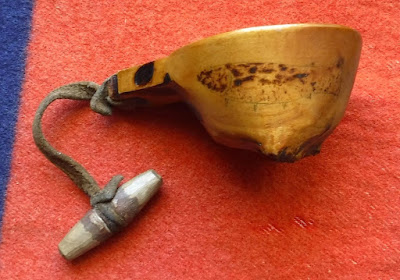Sir Alexander Mackenzie, fur trader and explorer, was born 1764, in Stornoway, Isle of Lewis, Scotland. He died March 12, 1820, near Dunkeld, Scotland.
He is best known for his overland crossing of what is now Canada to reach the Pacific Ocean in 1793.
After immigrating to North America, he became a partner in the North West Company, a rival of the Hudson’s Bay Company.
He was based in Montréal from 1794 to 1799, but had travelled to Grand Portage, New York, and Philadelphia on company business.
In 1788, in what is now the province of Alberta, Mackenzie and a cousin set up a trading post, Fort Chipewyan, on Lake Athabasca.
This was the starting point of his expedition of 1789, which followed the 1,100-mile course of Mackenzie River from the Great Slave Lake to the river’s delta on the Arctic Ocean.
In 1793 Mackenzie crossed the Rocky Mountains from Fort Chipewyan to the Pacific coast of what is now British Columbia.
These journeys together constitute the first known transcontinental crossing of America north of Mexico.
In 1799, Alexander Mackenzie severed ties with the North West Company (owing in part to conflict with Simon McTavish) and sailed for England. The next year he joined a rival company, the XY Company or New North West Company (which quickly became known as Alexander Mackenzie and Company).
His book, "Voyages from Montreal, on the River St. Laurence, Through the Continent of North America to the Frozen and Pacific Oceans, in the Years 1789 and 1793" was published in 1801. The book garnered him considerable public and literary attention.
United States President Thomas Jefferson presented an American edition of Mackenzie’s book to Meriwether Lewis, who would carry it to the Pacific on his famed expedition with William Clark in 1804-6.
Alexander Mackenzie was knighted in 1802 and lived in Scotland after 1812.
Alexander Mackenzie co-signed uncle Joseph Vielle dit Cossé’s voyageur contract
In 1797, my 5th great-uncle, Joseph Vielle dit Cossé signed a three-year contract and engaged as a voyageur to go to Nord Ouest [North West], Nipigon and Lac Superieur for traders McTavish, Frobisher and Company aka North West Company, the Company Representative was Alexander Mackenzie who co-signed the contract.
Joseph Vielle’s contract states he is a bowmen (Avant) the man located in the front (or bow) of the canoe who acted as the guide.
Perhaps Joseph was also with explorer David Thompson, who in 1797, was sent south by the North West Company (NWC) to survey part of the Canada-US boundary along the water routes from Lake Superior to Lake of the Woods to satisfy unresolved questions of territory arising from the Jay Treaty between Great Britain and the United States.
NOTE: Joseph Vielle’s sister Marie-Louise Vielle (1780-1813), my 4th great-grandmother, married Gabriel Pinsonneau (1770-1807), my 4th great-grandfather. Gabriel Pinsonneau was also a voyageur who travelled to Michigan in 1797, for a trading company owned by brothers Jacques and Francois Laselle.
LINEAGE:
Sir Alexander MacKenzie V 1764-1820 -- 7th cousin 9x removed
Kenneth MacKenzie 1731-1780 -- Father of Sir Alexander MacKenzie V
Donald MacKenzie 1700-_ -- Father of Kenneth MacKenzie
Roderick MacKenzie 5th of Fairburn 1605-1683 -- Father of Donald MacKenzie
Hector MacKenzie 4th of Fairburn 1577-1662 -- Father of Roderick MacKenzie 5th of Fairburn
Alexander MacKenzie 2nd of Fairburn -- Father of Hector MacKenzie 4th of Fairburn
Murdoch MacKenzie 1st of Fairburn 1525-1590 -- Father of Alexander MacKenzie 2nd of Fairburn
Rory Mor MacKenzie 1st of Achilty 1487-1533 -- Father of Murdoch MacKenzie 1st of Fairburn
Kenneth MacKenzie 7th of Kintail 1454-1492 -- Father of Rory Mor MacKenzie 1st of Achilty
(Kenneth MacKenzie 7th of Kintail — my 15th great-grandfather, Alexander’s 6th great-grandfather)
John MacKenzie 9th of Kintail 1483-1561 -- Son of Kenneth MacKenzie 7th of Kintail
Kenneth na Cuirc 'of the whittle' MacKenzie 10th of Kintail 1513-1568 -- Son of John MacKenzie 9th of Kintail
Elizabeth Mackenzie + 1539-1580 -- Daughter of Kenneth na Cuirc 'of the whittle' MacKenzie 10th of Kintail
Henry Urquhart 1564-1587 -- Son of Elizabeth Mackenzie
Sir Thomas Urquhart Sheriff of Cromarty 1582-1642 -- Son of Henry Urquhart
James Urquhart Minister, Covenanter in Moray and Ross 1632-1701 -- Son of Sir Thomas Urquhart Sheriff of Cromarty
John Urquhart of Newhall immigrant 1658-1731 -- Son of James Urquhart Minister, Covenanter in Moray and Ross
Margaret Urquhart 1675-1720 -- Daughter of John Urquhart of Newhall immigrant
Elizabeth Wright 1703-1785 -- Daughter of Margaret Urquhart
Jacob Weeks DNA proved 1735-1791 -- Son of Elizabeth Wright
Simon Weeks 1768-1840 -- Son of Jacob Weeks DNA proved
Maria (Mariah) Weeks 1810-1890 -- Daughter of Simon Weeks
John Galloway Brown 1833-1915 -- Son of Maria (Mariah) Weeks -- 3rd Great-Grandfather
Here’s a to video link a delightful biography for Alexander Mackenzie from Historica Canada…
“The Canadians: Alexander Mackenzie”
https://www.youtube.com/watch?v=1OGyKka62zo&t=11s














































